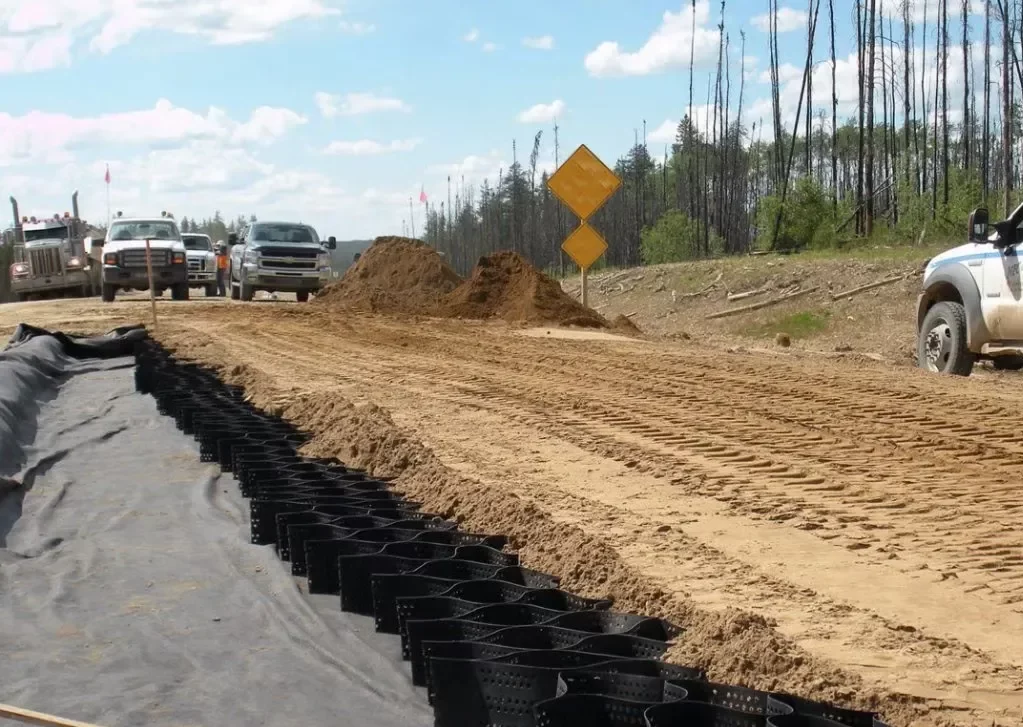The stability of any structure depends on the strength of its foundation. Over time, soil shifts, settles, and erodes, leading to foundational issues that can cause significant damage. Ground stabilization is a process that reinforces the soil beneath and around buildings, ensuring long-term support and preventing structural failure.
Properties in Starke and surrounding areas are particularly vulnerable to soil movement due to weather fluctuations, moisture retention, and naturally occurring ground conditions. Implementing ground stabilization methods can prevent costly repairs and preserve structural integrity.
Why Ground Stability Matters for Foundations
A weak or shifting foundation leads to various structural concerns, from minor cracks in walls to major foundation failures. The primary causes of ground instability include:
- Soil Erosion: Rain and water runoff gradually wear away the soil beneath a structure.
- Expansive Soil: Clay-rich soil expands with moisture and contracts when dry, causing uneven settlement.
- Improper Compaction: Poorly compacted soil beneath a foundation can create air pockets that later collapse, leading to sinking or shifting.
- Tree Roots: Vegetation absorbs moisture from the soil, altering its density and weakening the foundation.
Preventing these issues requires strategic ground stabilization to reinforce and secure the foundation before problems escalate.
Methods of Ground Stabilization
Soil Injection
This method involves injecting polyurethane foam or other stabilizing materials beneath the foundation to fill voids and increase soil density. It is an effective solution for correcting settlement and providing long-term support.
Soil Compaction
Compacting loose soil using mechanical or chemical methods enhances its load-bearing capacity. This technique is essential in areas with sandy or loose soil prone to shifting.
Grouting Techniques
Grout injection strengthens soil by filling gaps and stabilizing weak areas beneath the foundation. Cementitious or resin-based grouts are commonly used to increase soil density and reduce movement.
Drainage Control
Excess water can weaken the soil and lead to erosion. Installing drainage systems, such as French drains or swales, helps redirect water away from the foundation, preventing saturation and instability.
Retaining Structures
Retaining walls and barriers prevent soil displacement by providing additional support. These structures are particularly useful for properties on sloped terrain where soil movement is more pronounced.
How Ground Stabilization Protects Starke Homes and Businesses
Prevention of Foundation Damage
By reinforcing soil before settlement occurs, property owners avoid expensive repairs caused by sinking foundations and structural misalignment.
Increased Longevity of Structures
A well-stabilized foundation ensures that buildings remain structurally sound for decades, reducing maintenance costs and increasing property value.
Mitigation of Water Damage
Proper ground stabilization helps manage moisture levels in the soil, preventing excessive expansion and contraction that leads to foundation cracking.
Protection Against Soil Erosion
Stabilized soil maintains its composition even during heavy rainfall, reducing the risk of soil washout and ground displacement.
Ensure Your Foundation’s Strength with Professional Ground Stabilization
Investing in ground stabilization is a proactive approach to safeguarding your property. By reinforcing the soil beneath your home or commercial building, you prevent costly structural damage and maintain a secure foundation.
At R-Factor Spray Foam, we specialize in advanced ground stabilization solutions tailored to the unique needs of properties in Starke. Our team ensures that your foundation remains secure, preventing settlement and long-term structural issues.
For expert ground stabilization services, contact R-Factor Spray Foam at (352) 663-5905 or email [email protected].
Frequently Asked Questions
How do I know if my property needs ground stabilization?
Signs include foundation cracks, uneven floors, doors or windows that stick, and visible soil erosion around your home or building.
Is ground stabilization a permanent solution?
Many stabilization methods provide long-lasting results, but periodic assessments may be needed to address any new environmental changes.
How much does ground stabilization cost?
Costs vary depending on the method used, soil conditions, and property size. A professional assessment provides the most accurate estimate.
Can I stabilize the ground myself?
Some minor soil compaction techniques can be DIY-friendly, but professional solutions offer long-term effectiveness and stability.
Will ground stabilization disrupt my property?
Most techniques, such as soil injection or grouting, cause minimal disruption and can be completed quickly without extensive excavation.
Does ground stabilization prevent flooding?
While not a direct flood prevention measure, it improves drainage and soil strength, reducing water-related damage.
What types of soil benefit most from stabilization?
Expansive clay, loose sand, and poorly compacted fill material are the most common types that require stabilization.
How long does the process take?
The duration depends on the method used, but many stabilization techniques can be completed within a few days.
Can ground stabilization improve property value?
Yes, a stable foundation enhances the structural integrity of a property, making it more appealing to buyers and reducing future maintenance costs.
What is the best ground stabilization method?
The best method depends on the specific soil conditions and foundation issues. A professional evaluation determines the most suitable solution for your property.


